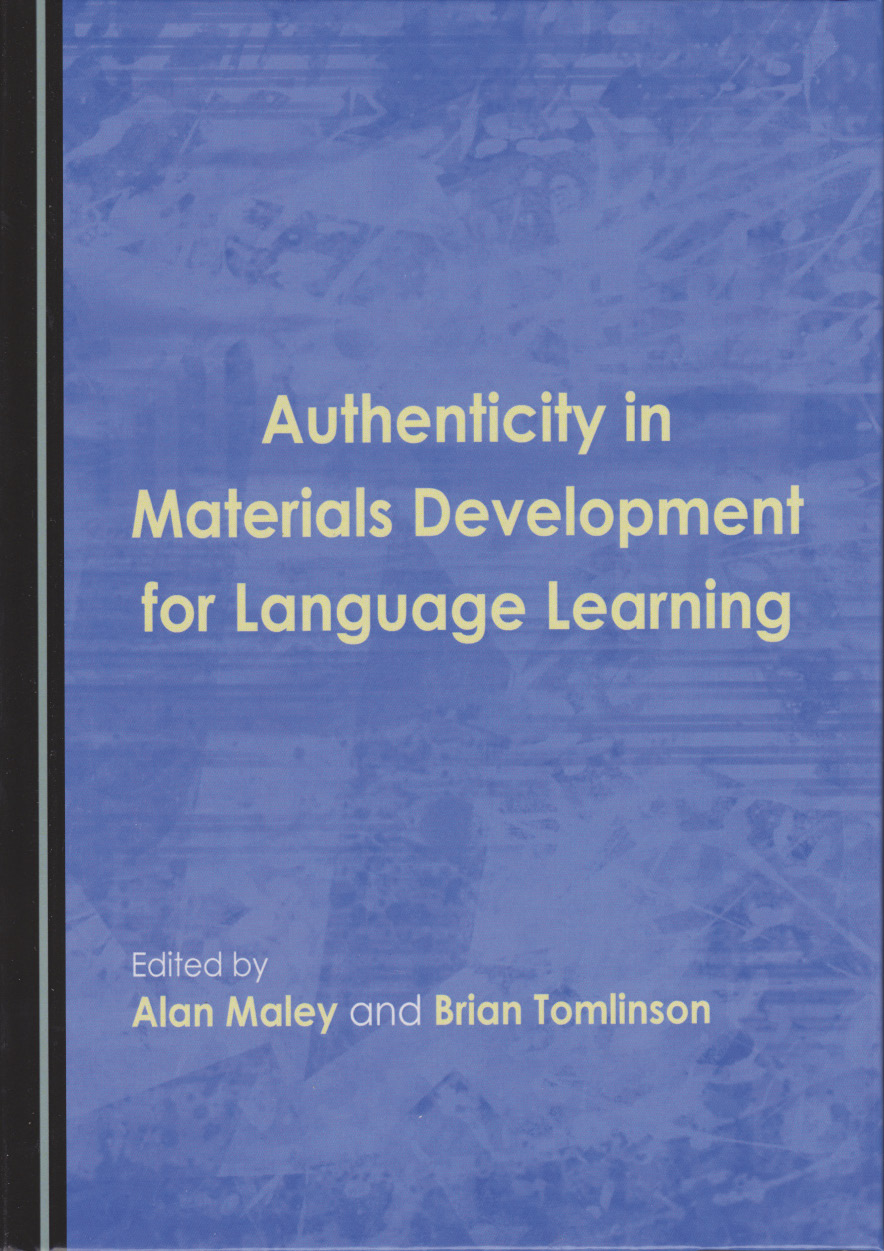Authenticity in Materials Development for Language Learning by Alan Maley and Brian Tomlinson
Authenticity in Materials Development for Language Learning
Edited by Alan Maley and Brian TomlinsonCambridge Scholars 2017
978-1-4438-7950-7

This book consists of a series of papers edited by Alan Maley and Brian Tomlinson, and stems from the MATSDA and University of Liverpool Conference on Authenticity and L2 Materials Development in June 2016. The chapters are designed to be of use to many and diverse readers, including teachers, materials developers and researchers, and the book’s aim is to be ‘academically rigorous’ but, at the same time, easily accessible.
The book begins with an Introduction by Brian Tomlinson, and then has 14 chapters on a wide range of areas relating to materials development and authenticity, such as curriculum authenticity and global Englishes. Each chapter is written by a different contributor and has detailed lists of relevant readings in the reference sections. The contributors come from many institutions, including universities in Iran, China and the United Kingdom, as well as the University of Limpopo and the Royal Air Force of Oman, and thus have varied experiences and perspectives of authenticity. The chapters are organised so that the book progresses from a general discussion of authenticity to more specific discussions of its meaning in particular contexts.
Tomlinson’s Introduction has an excellent exploration of the meaning of ‘authenticity’ and of various types, such as text, task and context authenticity, with clear reference to the chapters which deal with these. It is an extremely useful introduction, which examines many aspects of the topic which the reader may not have considered or been aware of previously. The exhaustive reference section at the end of the chapter is an excellent source of further reading.
Chapter 1, ‘Authenticity 2.0: Reconceptualising Authenticity in the Digital Era’, by Freda Mishan, deals with a reimagining of authenticity in the digital age, and has a discussion on how to make tasks more authentic, in terms of how the students use language on social media and in other digital contexts. Some useful examples of activities, such as ‘Cyberbullying’ and ‘Creating a meme’, are given.
Chapter 2, by Basma Bouziri, examines some of the problems encountered when implementing a new business English curriculum in Tunisian universities, including the relevance and organisation of content in terms of complexity. The recommendations it makes in terms of introducing a new curriculum would be applicable to a wide range of contexts.
Subsequent chapters include Claudia Saraceni’s ‘Discussion of Global Englishes and Materials Development’, which has a very interesting and relevant examination of authenticity in terms of ‘standard English’ and ‘global Englishes’, arguing that the authenticity of the language that learners are exposed to depends on the context in which they are learning, and that standard English is not necessarily authentic for all students. It provides examples of texts and tasks that teachers can use to raise their students’ awareness of other Englishes. Other particularly useful and interesting chapters include Chapter 6, ‘How Do Writers Evaluate Potentially Usable Authentic Materials?’ by Tony Waterman, and Chapter 7, ‘ELT Textbook Evaluation: The Philosophy-based Language Teaching Approach’ by Sasan Baleghizadeh and Zahra Javidanmehr, as well as Christian Jones’s excellent chapter ‘Soap Operas as Models of Authentic Conversations: Implications for Materials Design’.
Alan Maley’s Conclusion includes a fascinating, though somewhat brief, discussion of the authenticity of the learner and the teacher themselves, suggesting that this needs to be considered in addition to the authenticity of the task or the text. He suggests that it is important for the teacher to be ‘authentic’, not just as a teacher but also as a person, raising questions about the implications that this could have for teacher training.
Although the book examines materials development and authenticity in a range of different contexts, such as a South African university or a course teaching workplace English to Vietnamese graduates, the issues under consideration, the example tasks and the recommendations made are relevant and easily applicable to many different contexts. Although there is no doubt that this is an academic book, it is, as it set out to be, easily accessible, and it strikes the right balance between academic study and practical discussion and tasks. The fact that many of the chapters contain examples of texts and tasks that can be tried out means that this book can be used by both teachers and materials writers, while also being of much interest to researchers and post-graduate students. I believe that it is a very valuable and practical contribution to the field of authenticity and materials development, and would be useful to those interested in both the theoretical and the practical aspects of this area.
Tamzin Berridge, South Wigston, UK
Comments
Write a Comment
Comment Submitted